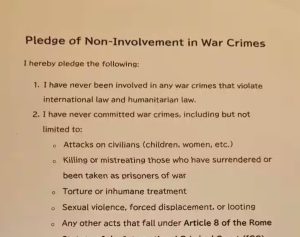
The “circus” may evoke nostalgic images of trips with parents to see clowns and elephants. But in 21st-century Japan, circuses are taking a different shape.
At Shinjuku Kadoza theater in Shinjuku — the heart of Tokyo — an all-male performance group, which calls itself SIRO-A, is breaking entertainment conventions. The four-man show TECHNO CIRCUS seeks to blend technology and the warm feeling of interactive circus entertainment for people of all ages and all nationalities to enjoy.
With a past of winning awards abroad, and even getting the Golden Buzzer from Piers Morgan in America’s Got Talent Season 10, this group is showing no sign of slowing down. The current show runs until the end of February 2019, with more shows to be announced at a later date.
Technology and Diversity
In plain terms, TECHNO CIRCUS is a largely non-verbal comedy show, featuring four dancers, a clown, and an adorable fluffy white mascot. But what exactly does that entail?
From the name it’s clear that technology plays center stage, quite literally. Using foreign brands, Japanese calligraphy, and futuristic lighting as narrative devices, the performance makes extensive use of project mapping and upbeat techno music. It is an experience which stimulates the senses with an immersive and anime-like quality.
However, SIRO-A creative director Cocoona clarifies that wowing people with technology is not the sole idea behind the show.
“We wanted to leave them thinking about a message, and, in this case, how we are a group of diverse people who put together different ideas and create something new. We wanted to communicate that diversity is important,” he said.
From Cocoona we learn that the choice of “circus” is not coincidental. TECHNO CIRCUS seeks to create harmony among stage and audience, based on the original etymology of the word: “circle.”
In fact, the lengths that members have gone to include the spectators is astounding, making for unusually interactive performances.
Cocoona explains how this reflected in the design of the show, “We decided to move part of the stage to the sides, and to use certain technologies to involve the audience.”
Even before the show starts, spectators visitors take pictures and sing with SIRO-A members, making for an intimate and fun atmosphere.
Interestingly, inclusivity is not limited to the Japanese audience. Most of the instructions are also delivered in English, and one number even features the resident clown asking the audience to name random countries, and delivering flawlessly the country’s national anthem.
Countries named when JAPAN Forward watched the show included Angola, Italy, and Russia. National anthems are normally only known by the locals, marking this as a very clever device to get close to people of all nationalities.
In essence, the will to make everyone feel welcome shines through, and Cocoona explains how this is rooted in wanting to show Japanese omotenashi (hospitality): “We want to be hospitable with our guests right from the moment they exit the elevator and come onto this floor.”
Be it taking pictures together, or playing an interactive ninja game on your way out, it’s a show that makes people of all ages and nationalities feel welcome.
Building An Entertainment Culture
Given the sensitivity to the foreign members in the audience, it’s clear that these performers have bigger plans than just the daily performances of TECHNO CIRCUS until the end of February 2019.
The group itself, SIRO-A, has had its fair share of experiences abroad. Its first long road show took them to Shanghai in 2010 for the World EXPO. It won the “Spirit of the Fringe Award” at the Edinburgh Fringe in 2011, and has had tours and performances all around Europe and Asia.
The group’s big break came in 2015 when it became the first Asian performance to receive the Golden Buzzer on the American contest show, America’s Got Talent Season 10, and made it all the way to the semifinals.
Cocoona admits to us that auditioning wasn’t all smooth sailing, however: “We only had four days to prepare. So we had a very long discussion about whether to participate or not. We ultimately decided we didn’t want any regrets, and the members practiced really hard for four days straight.”
The hard work clearly paid of. “Getting the Golden Buzzer was one of those moments where your mind goes completely blank, I was really moved,” the creative director continued.
For AGT novices, The Golden Buzzer is a special appreciation awarded by one of the judges, which allows the act to move directly to the next stage without the approval of the other panelists.
Given the success the group’s act had abroad, it now seeks to bring the people abroad to their own country, Japan. The aim is ambitious, to say the least, as Cocoona explains the reasoning: “New York has Broadway, London has the West End, Seoul has Daehangno. Tokyo doesn’t have that sort of entertainment culture yet. We thought, we want to build a Japanese Broadway.”
It is therefore a mix of technology, human inclusivity, and aiming for the stars that has brought the group this far.
As technology moves faster and faster, the group seems to be wanting to use the tools, but not give up what Cocoona calls the “human power” which can make or break a performance.
It remains to be seen what will be next for this malleable group of performers. In the meanwhile, make sure you check out their performance at Shinjuku Kadoza until the end of February!
Author: Arielle Busetto
















